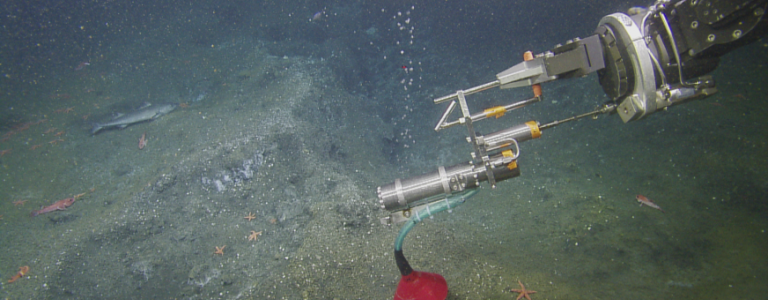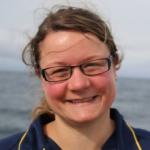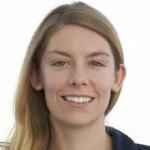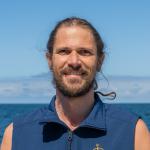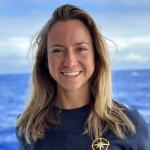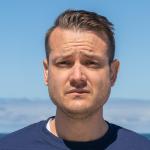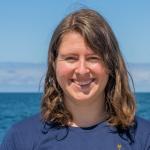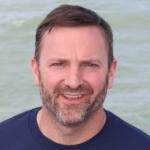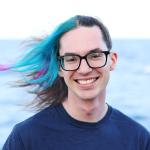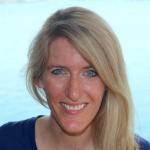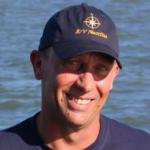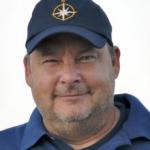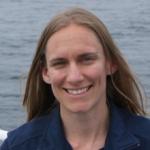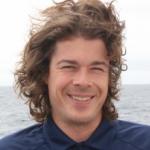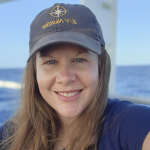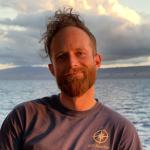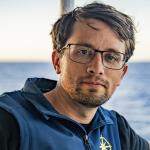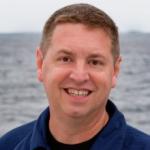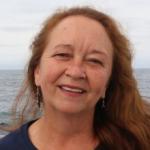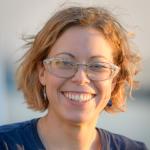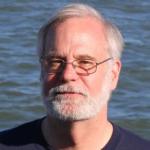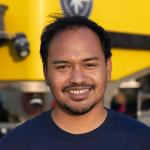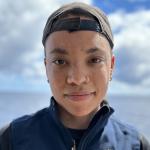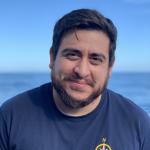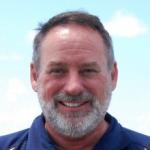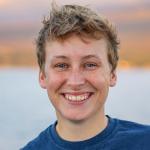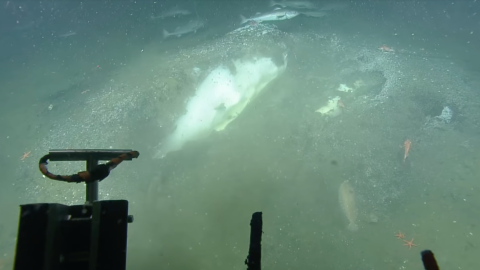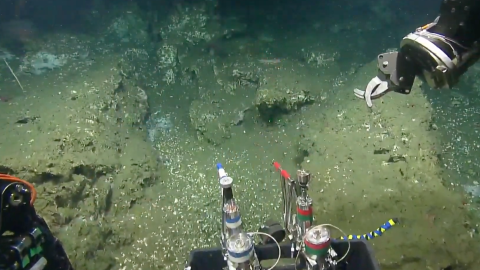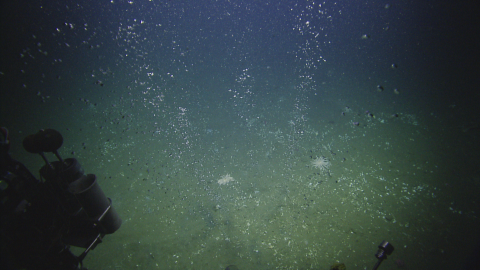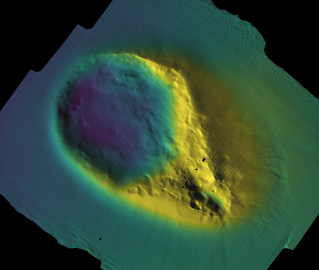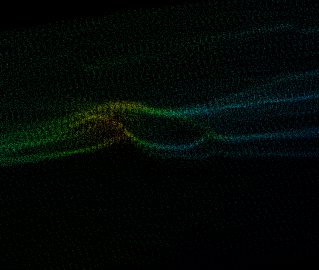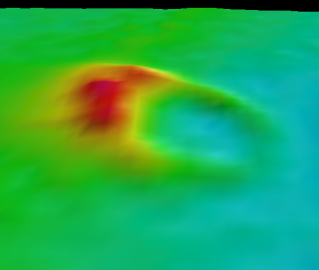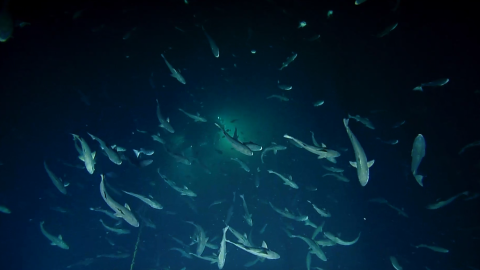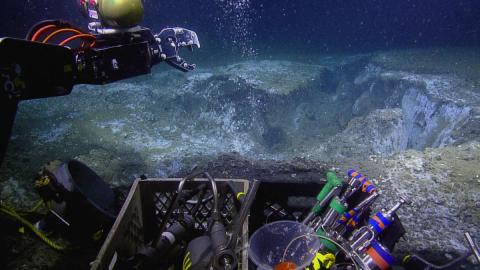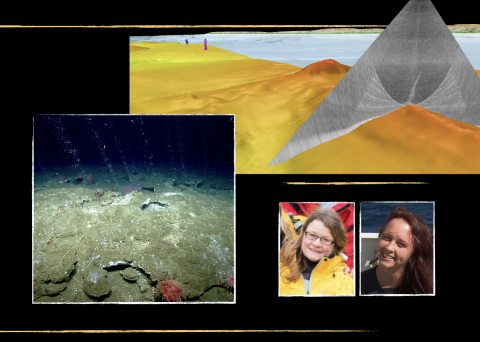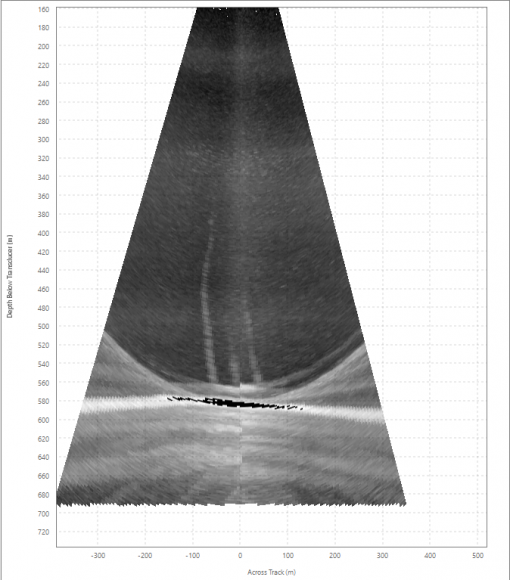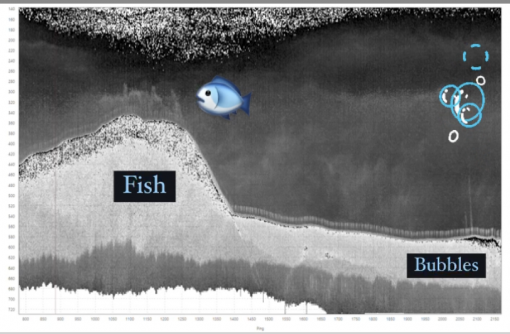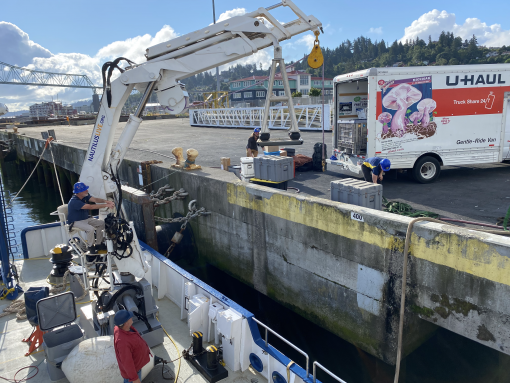For two weeks, E/V Nautilus will return to the Cascadia Margin, a geologically active region located offshore of Washington, Oregon, and northern California, where we have mapped and explored many methane seeps and cold seeps. Since the 2016 expedition season, E/V Nautilus and other vessel’s multibeam sonar surveys have located over 3,500 previously unknown bubble streams rising from the Cascadia Margin between the Strait of Juan de Fuca in Washington and California’s Cape Mendocino at depths between 200-3,200 meters (Merle et al., 2021).
Our 2021 dives will focus on several previously unexplored regions along the margin to sample at methane seep sites on the shelf and along the slope. Most of these seep sites were discovered during mid-water surveys on previous expeditions in 2016, 2017, and 2018, but have never been visited by an ROV. Just a small number of the previous ROV dive sites will be revisited to shed light on a helium anomaly observed in 2016 and 2018, as well as for a second field test of the new hydrate sampler. During nighttime mapping efforts, we will focus on exploring for more methane seeps in currently unsurveyed areas.
As we continue deep-sea documentation in this extensive coastal region from California to Washington, we acknowledge that the land and waters are within the traditional and modern territories of the Tolowa Dee-ni’, Chit-dee-ni, Tututni, Miluk Coos, Coos, Lower Umpqua, Siuslaw, Confederated Tribes of Grande Ronde, Älsé, Yakina, Tillamook, Siletz, Salmon River, Nestucca, Nehalem, Chinook, Clatsop, Willapa, Coast Salish, Chehalis, Quinault, Queets, ChalAt’i’lo t’sikAti, Quileute, Makah, and S’Klallum peoples.
This expedition is sponsored by NOAA Ocean Exploration through the Ocean Exploration Cooperative Institute.
